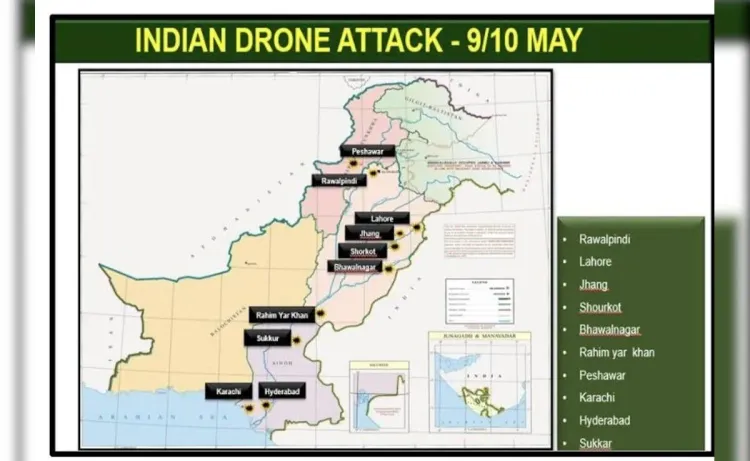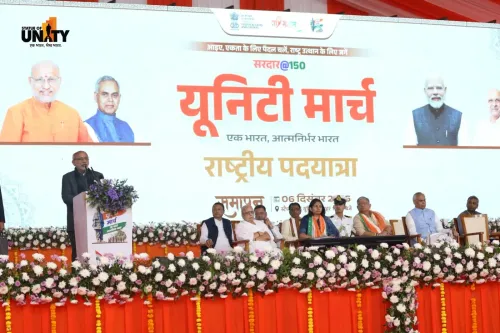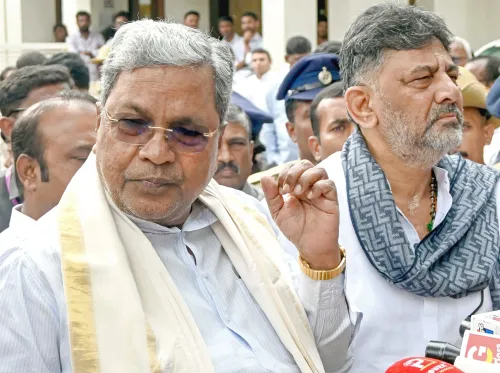Did Pakistan's dossier expose India's deeper strikes in Operation Sindoor?

Synopsis
Key Takeaways
- India's Operation Sindoor involved more extensive airstrikes than publicly acknowledged.
- Key cities in Pakistan were targeted, including Peshawar and Hyderabad.
- The dossier contradicts previous claims of heavy losses inflicted on India by Pakistan.
- Pakistan's request for a ceasefire reflects the significant impact of these military operations.
- These developments signify a shift in India's military strategy towards a more aggressive counter-terrorism policy.
New Delhi, June 3 (NationPress) A confidential Pakistani dossier has unveiled that India conducted airstrikes deeper into Pakistan during Operation Sindoor than what was officially reported. This report on Pakistan's internal military Operation 'Bunyan un Marsoos' was accessed by NDTV and details at least eight additional Indian airstrikes that Indian defense authorities had not previously disclosed.
The maps included in the dossier indicate that Indian strikes targeted key cities such as Peshawar, Jhang, Hyderabad in Sindh, Gujrat in Punjab, Gujranwala, Bahawalnagar, Attock, and Chor. These locations were not mentioned by the Indian Air Force or the Director General of Military Operations during post-May 7 press briefings.
These revelations offer new insights into the extent of Operation Sindoor and are seen as a crucial reason behind Pakistan's urgent plea for a ceasefire.
Initiated by India against nine high-value terrorist hubs in Pakistan and Pakistan-occupied Kashmir (PoK) in response to the heinous Pahalgam terror attack, where 26 civilians including a Nepali national were killed by terrorists affiliated with a faction of Lashkar-e-Taiba, the dossier contradicts previous Pakistani claims of inflicting heavy losses on India.
Instead, it emphasizes the significant damage inflicted on Pakistani territory. Indian defense sources had already detailed the magnitude of the strikes, which included targeting critical terror hubs as retaliation for the Pahalgam attack.
While the initial briefings identified several high-value targets, including the Jaish-e-Mohammed headquarters in Bahawalpur and the Lashkar-e-Taiba camp in Muridke, the revelation of more in-depth incursions indicates a strategic choice by New Delhi to let Pakistan disclose the full scope of the damage.
Reportedly, the newly revealed targets encompass both military and dual-use installations in urban centers far beyond those acknowledged by India, suggesting a far more ambitious military operation than previously recognized.
Earlier satellite imagery from Maxar Technologies had already validated extensive damage at various sites, corroborating Indian assertions of precise strikes against terrorist infrastructure.
The nine locations initially confirmed by India included Muzaffarabad, Kotli, Rawalakot, Chakswari, Bhimber, Neelum Valley, Jhelum, Chakwal, and the previously mentioned terror bases.
Despite India's firm stance that its actions targeted only terror facilities, Pakistan retaliated with numerous drone and missile attacks on Indian civilian areas, places of worship, and military installations along the western front.
India's counter-response involved targeting 11 Pakistani air bases including Nur Khan, Rafiqui, Murid, Sukkur, Sialkot, Pasrur, Chunian, Sargodha, Skardu, Bholari, and Jacobabad, resulting in significant military damage.
This unprecedented escalation lasted three days and ultimately compelled Pakistan to request a ceasefire, a move widely interpreted as evidence of the substantial losses it incurred.
Meanwhile, New Delhi has reiterated that Operation Sindoor has redefined India's counter-terrorism policy, establishing a 'new normal' against terrorism, where any major terror attack could be perceived as a declaration of war.
The Pakistani dossier, inadvertently supporting India's operational narrative, highlights the evolving dynamics of India's military strategy.










